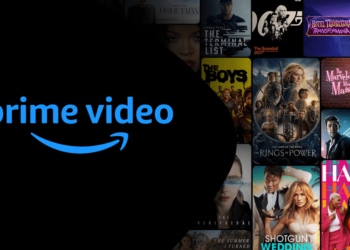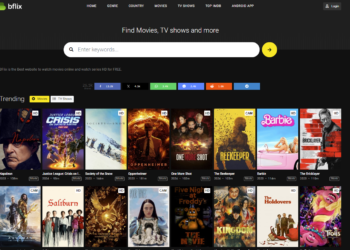Streaming has become a popular way to watch movies, TV shows, and other video content. It’s a convenient option for those who don’t want to commit to buying or renting physical media or subscribing to cable. With streaming, you can watch whatever you want, whenever you want. And with the rise of streaming services like Netflix, Hulu, and Amazon Prime Video, there’s something for everyone. Streaming is also becoming more affordable. For example, Netflix and Hulu both offer competitively priced subscriptions, with Hulu even offering a free-to-watch basic plan. And with the added convenience of being able to watch on any device, it’s easy to see why streaming is gaining popularity. So if you’re looking for an easy, affordable way to watch your favorite shows, streaming is the way to go.
What is streaming?
The very first websites were basic web pages of text with maybe an image or two. Today, nonetheless, anyone with a quick adequate Net connection can see high-def films or make a video call online. This is possible due to a technology called streaming.
Streaming is the constant transmission of audio or video files from a web server to a customer. In less complex terms, streaming is what takes place when customers view TV or pay attention to podcasts on Internet-connected tools. With streaming, the media file being played on the customer gadget is stored from another location, as well as is transmitted a couple of seconds at once over the Internet. This technological evolution allows websites to deliver movies in a high quality and that’s the reason of people looking for the best sites to watch movies and tv shows for free.
What is the difference between streaming as well as downloading?
Streaming is real-time, as well as it’s a lot more reliable than downloading media files. If a video file is downloaded, a copy of the whole file is saved onto a gadget’s hard disk, and the video can not play up until the entire file finishes downloading. If it’s streamed instead, the web browser plays the video without really replicating as well as saving it. The video loads a bit at a time rather than the entire file loading at once, and also the information that the web browser tons is not saved locally.
Think of the difference between a lake as well as a stream: Both include water, and also a stream might contain just as much water as a lake; the difference is that with a stream, the water is not all in the exact same place at the same time. A downloaded video file is much more like a lake, because it uses up a lot of hard drive room (and also it takes a very long time to move a lake). Streaming video is extra like a stream or a river, because the video’s data is continuously, quickly streaming to the customer’s internet browser.
Exactly how does streaming work?
Just like various other data that’s sent out over the Internet, audio and video information is broken down into information packets. Each packet contains a tiny item of the file, as well as an audio or video player in the browser on the client tool takes the circulation of information packages and interprets them as video or audio.
Does streaming use the Individual Datagram Procedure (UDP) or the Transmission Control Protocol (TCP)?
Some streaming methods make use of UDP, and some use TCP. UDP and TCP are transport procedures, meaning they are utilized for moving packets of information across networks. Both are utilized with the Internet Procedure (IP). TCP opens a specialized link prior to sending information, and it makes sure all data packets show up in order. Unlike TCP, UDP does neither of these things. Because of this, TCP is a lot more trustworthy, however sending information using UDP does not take as long as it does using TCP, although some packets are shed along the road.
If TCP is like a bundle distribution solution that calls for the recipient to sign for the bundle, then UDP resembles a distribution solution that leaves packages on the front porch without knocking on the door to obtain a signature. The TCP distribution solution sheds less bundles, but the UDP distribution solution is quicker, due to the fact that packages can obtain left even if no one is house to sign for them.
For streaming, in some cases rate is far more important than reliability. For example, if somebody remains in a video meeting, they would favor to communicate with the other meeting attendees in real time than to sit and also await every bit of data to be provided. As a result, a couple of shed data packages is not a huge issue, and UDP should be used.
In other situations, reliability is more vital for streaming. As an example, both HTTP live streaming (HLS) as well as MPEG-DASH are streaming methods that make use of TCP for transportation. Many video-on-demand solutions utilize TCP.
Enjoy reading these articles:
-
- What is www IFVOD TV ? The Complete Guide
- VIPLeague Review – The Complete Guide & VIPLeague Alternative
- VIPRow Sports – The Complete Guide & Best VIPRow Alternative
- USTVGO.TV – 80+ Live Stream TV Channels
- Streameast & Alternatives Websites and Competitors
- Best Free Movie and TV Streaming Services that will saving your Money
- VIPBox & 10 Web Sites Like VIPBox for Live Sports Streaming
- 6streams – Alternatives Websites To See Boxing, MMA and NFL
What is buffering?
Streaming media players load a few seconds of the stream ahead of time so that the video or audio can proceed playing if the link is briefly disrupted. This is called buffering. Buffering makes sure that videos can play efficiently and also continuously. Nonetheless, over sluggish connections, or if a network has a great deal of latency, a video can take a long time to barrier.
What factors slow down streaming?
On the network side:
Network latency: A range of factors effect latency, consisting of where the content that individuals are trying to accessibility is saved.
Network congestion: If way too much information is sent out with the network, this can degrade streaming efficiency.
On the user side:
WiFi issues: Reactivating the LAN router, or switching over to Ethernet as opposed to WiFi, can assist boost streaming performance.
Gradually doing client tools: To play videos takes a good quantity of handling power. If the gadget streaming the video has a lot of other procedures running or is simply sluggish as a whole, streaming performance can be influenced.
Read Also: Roku Login | Your Complete Guide
Not nearly enough bandwidth: For streaming video, house networks require about 4 Mbps of bandwidth; for high-definition video, they will likely require a lot more.
Just how can streaming be made much faster?
Streaming is subject to the very same sort of hold-ups and performance destructions as other type of internet material. Due to the fact that the streamed content is kept in other places, hosting place makes a large difference, as holds true with any kind of kind of content accessed over the Internet. If a customer in New york city is trying to stream from a Netflix web server in Los Gatos, the video content will certainly need to cross 3,000 miles in order to get to the customer, and also the video will certainly need to spend a long time buffering or might not even play at all. Therefore, Netflix and also other streaming providers make extensive use of distributed web content shipment networks (CDN), which store web content in areas around the world that are a lot closer to individuals.






